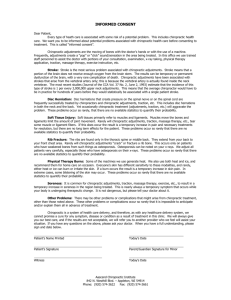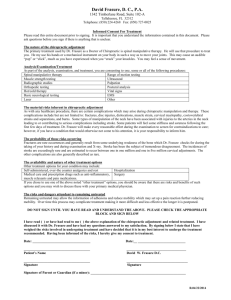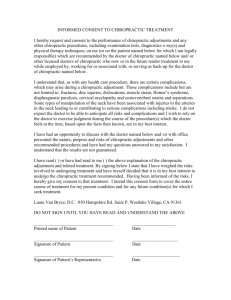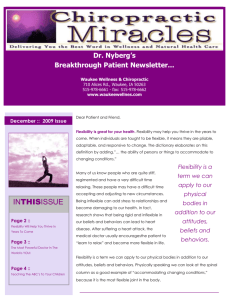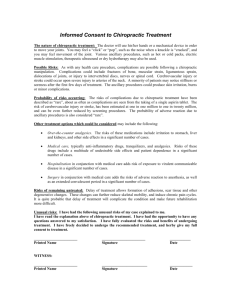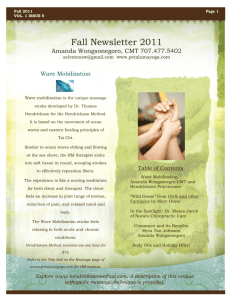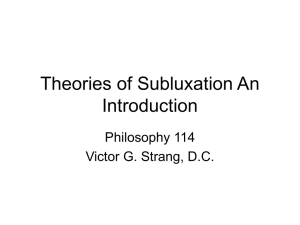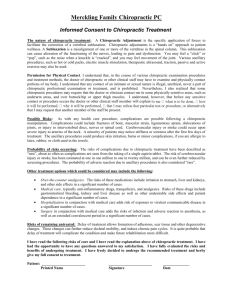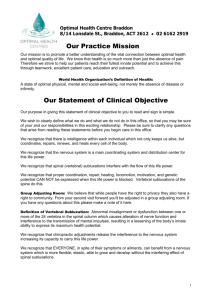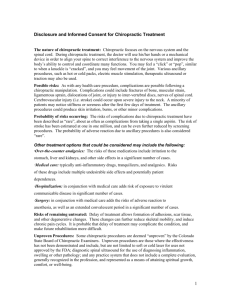Informed Consent for Exam
advertisement
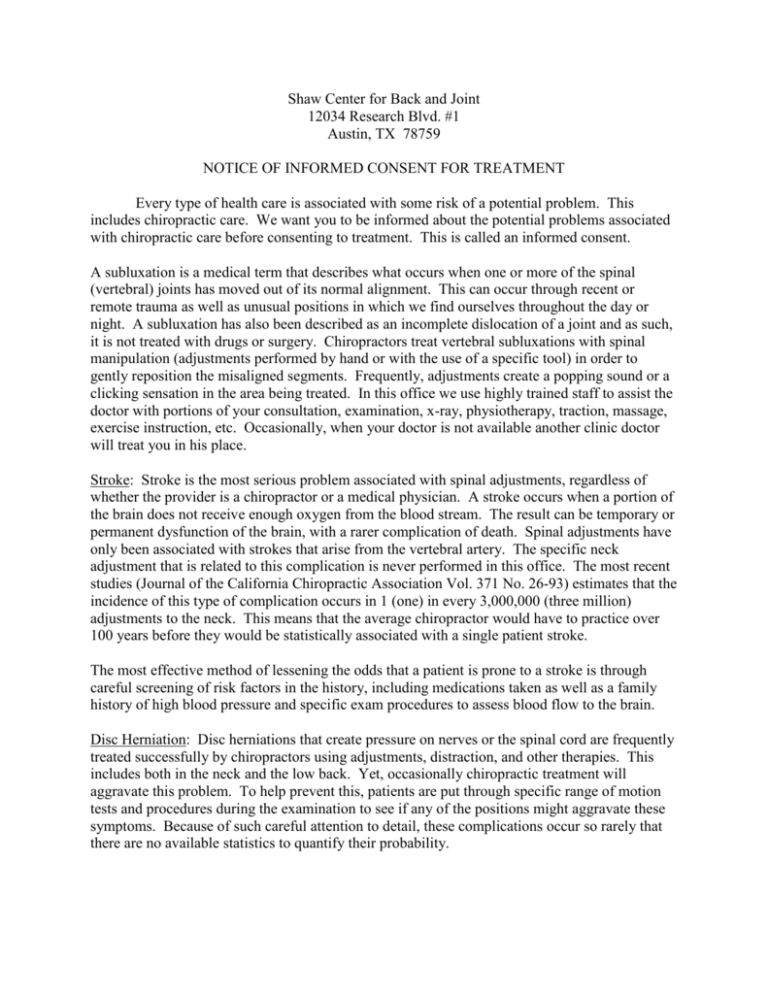
Shaw Center for Back and Joint 12034 Research Blvd. #1 Austin, TX 78759 NOTICE OF INFORMED CONSENT FOR TREATMENT Every type of health care is associated with some risk of a potential problem. This includes chiropractic care. We want you to be informed about the potential problems associated with chiropractic care before consenting to treatment. This is called an informed consent. A subluxation is a medical term that describes what occurs when one or more of the spinal (vertebral) joints has moved out of its normal alignment. This can occur through recent or remote trauma as well as unusual positions in which we find ourselves throughout the day or night. A subluxation has also been described as an incomplete dislocation of a joint and as such, it is not treated with drugs or surgery. Chiropractors treat vertebral subluxations with spinal manipulation (adjustments performed by hand or with the use of a specific tool) in order to gently reposition the misaligned segments. Frequently, adjustments create a popping sound or a clicking sensation in the area being treated. In this office we use highly trained staff to assist the doctor with portions of your consultation, examination, x-ray, physiotherapy, traction, massage, exercise instruction, etc. Occasionally, when your doctor is not available another clinic doctor will treat you in his place. Stroke: Stroke is the most serious problem associated with spinal adjustments, regardless of whether the provider is a chiropractor or a medical physician. A stroke occurs when a portion of the brain does not receive enough oxygen from the blood stream. The result can be temporary or permanent dysfunction of the brain, with a rarer complication of death. Spinal adjustments have only been associated with strokes that arise from the vertebral artery. The specific neck adjustment that is related to this complication is never performed in this office. The most recent studies (Journal of the California Chiropractic Association Vol. 371 No. 26-93) estimates that the incidence of this type of complication occurs in 1 (one) in every 3,000,000 (three million) adjustments to the neck. This means that the average chiropractor would have to practice over 100 years before they would be statistically associated with a single patient stroke. The most effective method of lessening the odds that a patient is prone to a stroke is through careful screening of risk factors in the history, including medications taken as well as a family history of high blood pressure and specific exam procedures to assess blood flow to the brain. Disc Herniation: Disc herniations that create pressure on nerves or the spinal cord are frequently treated successfully by chiropractors using adjustments, distraction, and other therapies. This includes both in the neck and the low back. Yet, occasionally chiropractic treatment will aggravate this problem. To help prevent this, patients are put through specific range of motion tests and procedures during the examination to see if any of the positions might aggravate these symptoms. Because of such careful attention to detail, these complications occur so rarely that there are no available statistics to quantify their probability. Soft Tissue Injury: Soft tissue refers primarily to the muscles, tendons, and ligaments. Muscles move bones and ligaments limit joint movement. Rarely, a chiropractic adjustment, traction, massage, etc. may strain some muscle or ligament fibers. The result is a temporary increase in pain requiring specific treatment for the resolution, with no long term affects to the patient. These problems occur so rarely that there are no available statistics to quantify their probability. Rib Fractures: the ribs are found attached to the thoracic spine in the middle back. They extend from your back to the front of the chest. Rarely, a chiropractic adjustment may break a rib; this is referred to as a fracture. This occurs only to those patients who have weakened bones from such things as osteoporosis, prolonged steroid use, or other bone weakening diseases. This can be ruled out in the history or x-ray. We adjust all patients carefully and especially those with bone weakened conditions. This problem occurs so rarely that there are no statistics available to quantify their probability. Physical Therapy Irritations: Some therapeutic machines and analgesic balms generate heat. We use different forms of heat and ice in the office and occasionally recommend them for use at home. Everyone’s skin has a different sensitivity to these modalities, and rarely heat or ice can irritate the skin. The result is a temporary increase of skin pain and possibly some blistering. These problems occur so rarely that there are no statistics to determine their probability. Soreness: It is not uncommon for spinal adjustments, distraction, massage, exercise, etc. to result in a temporary increase in soreness in the area being treated. This is nearly always a temporary symptom that occurs while your body is undergoing therapeutic change. It is not dangerous, but please do tell the doctor or a staff member about it. Other problems: There may be other problems or complications that may arise from Chiropractic treatment other than those mentioned above. These other complications occur so rarely that it is impossible to anticipate or explain them all in advance of treatment. Chiropractic is a system of health care delivery, and therefore, as with any health care delivery system, we can not promise a cure for all symptoms, diseases, or conditions as a result of treatment at this facility. We will always give you the best care that we can deliver, and if the results are not acceptable, we will gladly discus other types of treatment options or refer you to another health care provider for alternative types of treatment. If you have any questions on the above information, please ask Dr. James Shaw to explain them more fully. When you have a full understanding of this material please sign and date this document below and then return it to the front desk or the doctor. ______________________________________ _______________ Patients signature Date ______________________________________ _______________________ Patients name Parent/Guardians signature ______________________________________ _______________ Witness Date
